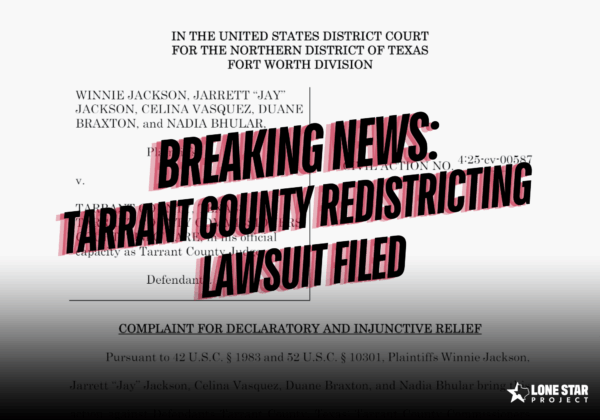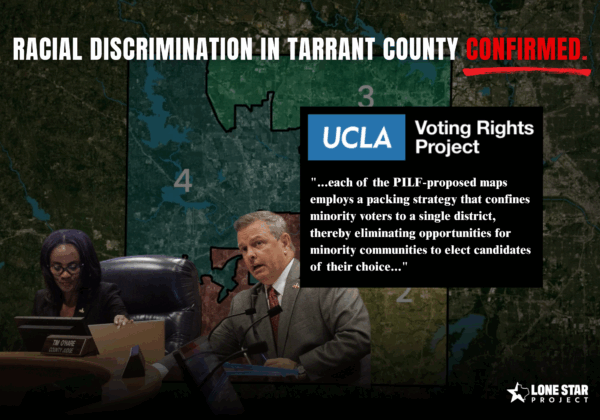
See the GOP Plan – PDF
Interactive Map
Any view that Texas Republicans see a future in winning the support of minority voters can be put to rest. The Republican congressional redistricting plan rolled out yesterday is a dramatic example of systematically undermining the voting strength of minority Texans. It shows that Republicans would much rather destroy minority voting influence than go to the trouble of winning minority voter support.
Even though all four of the new districts Texas received as a result of the 2010 census were due to the increase in Texas’ Hispanic and African American populations, the Republican plan reduces the number of districts where minority voters have the opportunity to elect their candidate of choice from 11 out of 32 districts (34%) to only 10 out of 36 districts (28%).
The Republicans went to great lengths to exclude any meaningful participation by minority legislators. Why? Because the plan dramatically retrogress minority voting strength at the statewide, regional and district levels. The GOP plan is such an aggressive attack on minority voters that it almost certainly violates both Section 2 and Section 5 of the US Voting Rights Act.
Minority Officeholders Shut Out of Process
- The GOP congressional plan was developed without any input from legislators who were elected as the choice of Latino or African American voters.
- During the legislative session, there was one hearing on congressional redistricting in the Texas House committee and one in the Texas Senate committee.
- No plan was presented at either hearing.
- The map presented now ignores the testimony of Latino and African American witnesses who did attend the hearings.
- The GOP plan was hidden from minority Members of the House and Senate – even minority Members of the House or Senate redistricting committees – until it was made public on Tuesday.
- Governor Rick Perry acknowledged that the plan would be developed and passed without public input, when he told reporters that he would only call legislators back to Austin on redistricting if lawmakers agree on a map in advance. Perry said, “When they get to an agreed bill, then I would be willing to talk about having them back in there for a very quick two- or three-day session to get redistricting done.” (The Texas Tribune May 28, 2011).
Statewide Retrogression
- Texas received four additional congressional districts for one reason only: the explosive growth of the state’s Latino and African American population. Over the last decade the Hispanic population in Texas grew at 10 times the rate of Anglos. The African American population grew at 5 times the rate of Anglos.
- If the entire state of Texas had grown at only the rate of its Anglo population, Texas would not have gained any new districts and may well have lost a district.
- In the current congressional map there are 11 of 32 districts where minority voters have been able to elect their candidate of choice – seven are effective Latino opportunity districts, three are effective African American opportunity districts and one is an effective coalition district where minority citizens unite with like-minded Anglo voters to elect their candidate of choice.
- Under the proposed GOP plan, only 10 of 32 Districts provide minority citizens the opportunity to elect their candidate of choice.
Failure to Create New Minority Districts Violates Section 2 of the Voting Rights Act
- The Dallas/Fort Worth area is one of the largest and fastest growing areas of Hispanic and African Americans residents in the country.
- Over 2.1 million African American and Hispanic residents live in Dallas County and Tarrant County (Fort Worth) combined – easily enough to support three minority opportunity districts.
- Tarrant County has the largest African American population in the country not currently represented by a Democrat in Congress.
- The DFW area has the largest number of Hispanic residents stranded in Republican districts in the country.
- Currently, the area includes only one minority district. The GOP plan fails to draw any new minority opportunity districts leaving well over a million minorities disenfranchised and stranded in Republican districts represented by Members of Congress they do not support at the polls.


